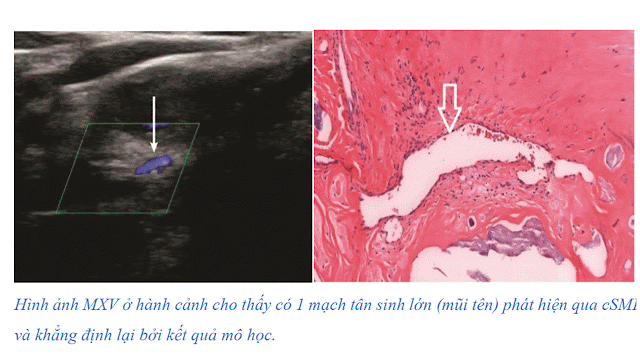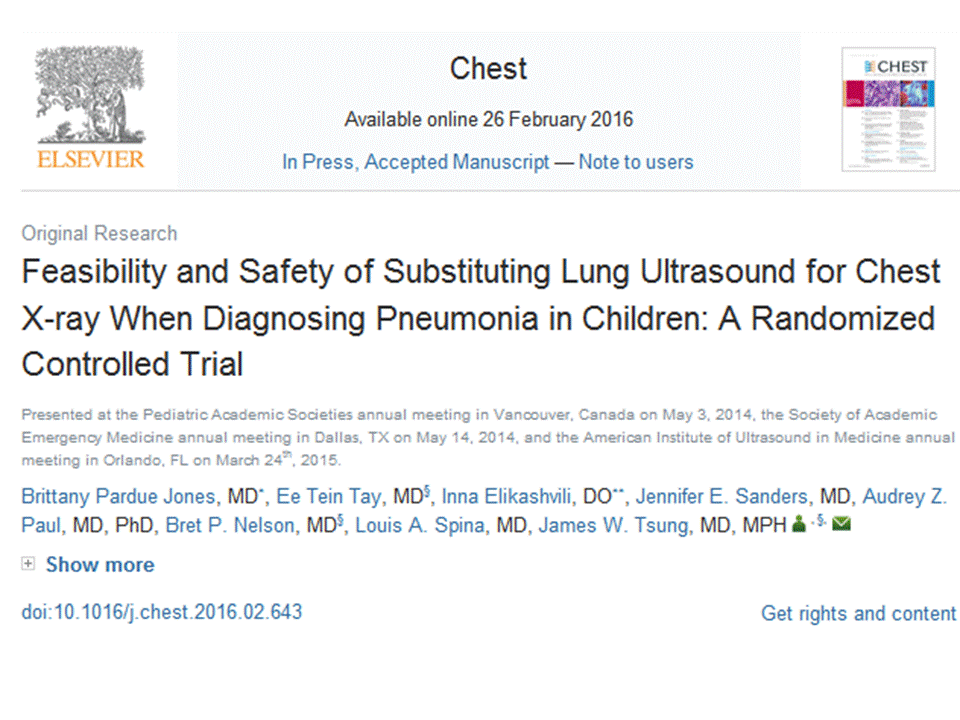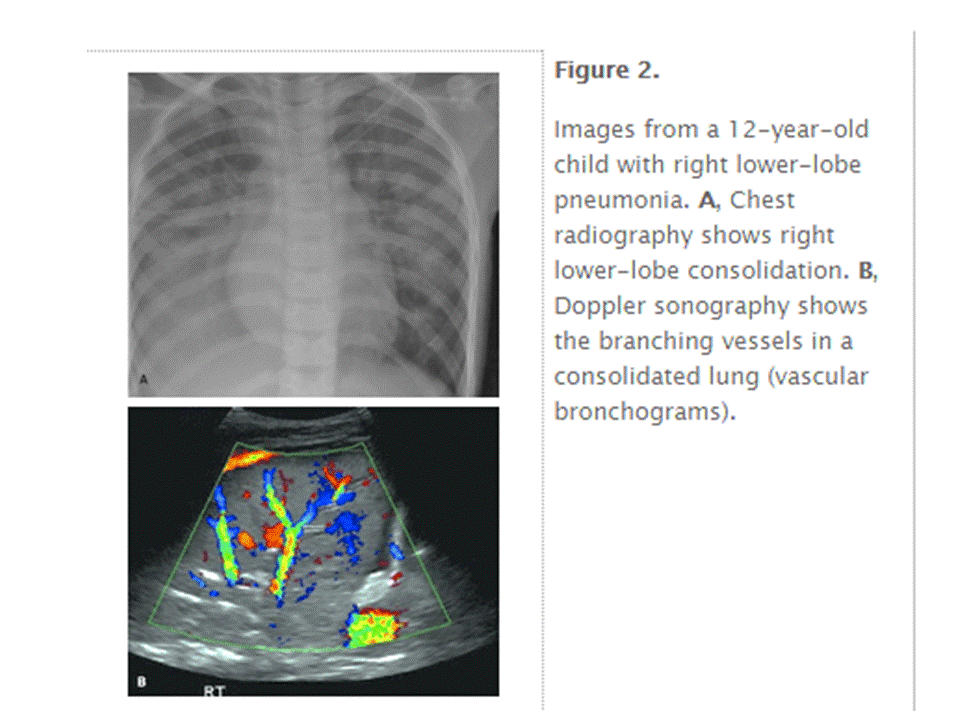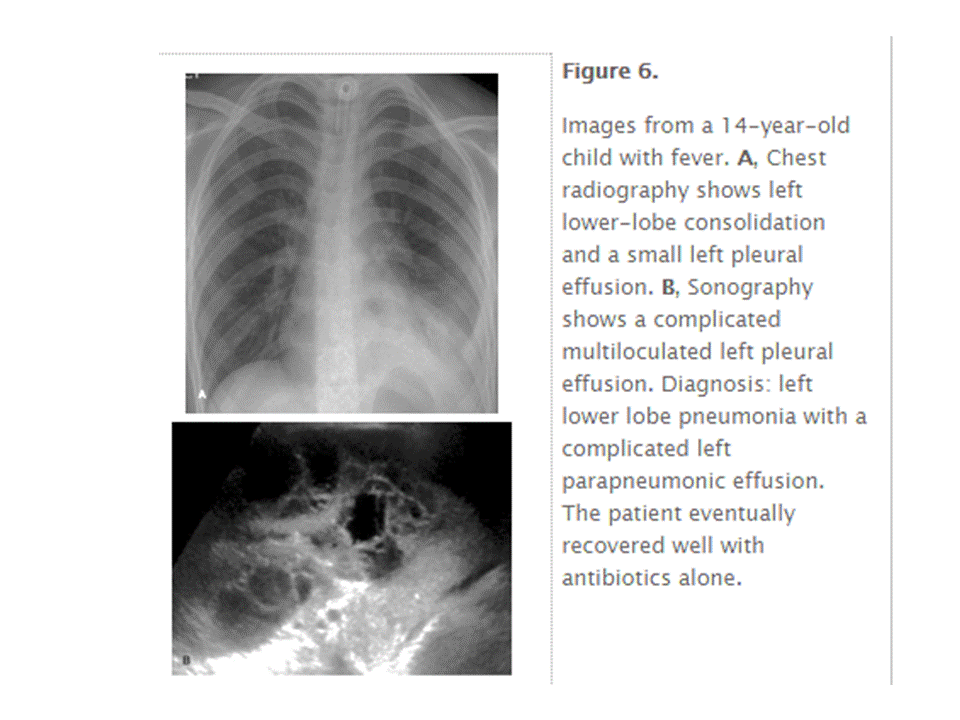Download for Rago and Asteria criteria
Added elastography value for characterizing thyroid nodules
Tổng số lượt xem trang
Thứ Tư, 27 tháng 7, 2016
Thứ Sáu, 8 tháng 7, 2016
Esophageal Varices and SWE
By Erik L. Ridley, AuntMinnie staff writer
July 7, 2016 -- Shear-wave elastography can noninvasively predict the presence of esophageal varices in patients with the first stage of liver cirrhosis, and bests other measures for spotting high-risk varices, according to research published in the July issue of the Journal of Ultrasound in Medicine.
Thứ Hai, 27 tháng 6, 2016
CHUẨN BỊ THAM GIA HỘI NGHỊ CHẨN ĐOÁN HÌNH ẢNH TOÀN QUỐC LẦN 18 19-20/8 ĐÀ NẴNG
Gồm 8 bài báo cáo về siêu âm:
1/ ARFI U VÚ LÀNH TÍNH VÀ ÁC TÍNH, BS VÕ NGUYỄN THỤC QUYÊN, BS LÊ THANH LIÊM, BS PHAN THANH HẢI PHƯỢNG, BS PHAN THANH HẢI
2/ TÚI GIẢ PHÌNH TĨNH MẠCH THẬN TRÁI, CHẨN ĐOÁN VÀ ĐIỀU TRỊ, BS NGUYỄN NGHIỆP VĂN
3/ GIẢNG DẠY GIẢI PHẪU HỌC BẰNG SIÊU ÂM: KINH NGHIỆM BAN ĐẦU, BS NGUYỄN THIỆN HÙNG-BS PHAN THANH HẢI
4/ SMI TRONG CHÂN DOÁN U GAN, BS NGUYEN NGHIEP VAN , BS PHAN THANH HAI PHUONG, BS PHAN THANH HAI
5/ KHẢO SÁT VI MẠCH SMI NHÂN GIÁP LÀNH TÍNH VÀ ÁC TÍNH, BS LÊ TỰ PHÚC
http://vcr2016.com.vn/Content.aspx?cid=53
1/ ARFI U VÚ LÀNH TÍNH VÀ ÁC TÍNH, BS VÕ NGUYỄN THỤC QUYÊN, BS LÊ THANH LIÊM, BS PHAN THANH HẢI PHƯỢNG, BS PHAN THANH HẢI
2/ TÚI GIẢ PHÌNH TĨNH MẠCH THẬN TRÁI, CHẨN ĐOÁN VÀ ĐIỀU TRỊ, BS NGUYỄN NGHIỆP VĂN
3/ GIẢNG DẠY GIẢI PHẪU HỌC BẰNG SIÊU ÂM: KINH NGHIỆM BAN ĐẦU, BS NGUYỄN THIỆN HÙNG-BS PHAN THANH HẢI
4/ SMI TRONG CHÂN DOÁN U GAN, BS NGUYEN NGHIEP VAN , BS PHAN THANH HAI PHUONG, BS PHAN THANH HAI
5/ KHẢO SÁT VI MẠCH SMI NHÂN GIÁP LÀNH TÍNH VÀ ÁC TÍNH, BS LÊ TỰ PHÚC
6/ U tụy đặc giả nhú ở trẻ em (case report), BS LÊ THANH LIÊM
7/ SIÊU ÂM PHÁT HIỆN GÃY XƯƠNG SƯỜN, BS LÊ THANH LIÊM.
8/ ARFI THẬN BẾ TẮC DO SỎI VÀ DO HẸP KHÚC NỐI, BS TRẦN NGÂN CHÂU.
Thứ Năm, 9 tháng 6, 2016
Thứ Ba, 7 tháng 6, 2016
Vai trò siêu âm SMI trong chẩn đoán u gan và theo dỏi điều tri
DOWNLOAD theo link
vai-tr-siu-m-smi-trong-chn-on-u-gan-va-theo-di-iu-tr
vai tro sieu am SMI trong chan doan u gan va theo doi dieu tri
I.
Đặt Vấn Đề:
II.
Kỹ Thuật SMI (Superb Micro – Vascular
Imaging)
III.
Ứng Dụng Của SMI
1.
Khảo sát tân sinh mạch trong mảng xơ vữa động
mạch cảnh
2.
Khảo
sát tái tưới máu trong huyết khối, đánh giá hiệu quả xơ hóa tĩnh mạch hiển lớn
sau can thiệp nội mạch
IV.
Kết
Luận:
Tài liệu tham khảo
2. Oura K, Kato T, Ohba H, Terayama Y. Evaluation
of Intraplaque Neovascularization Using Superb Microvascular Imaging and
Contrast-Enhanced Ultrasonography. J Stroke Cerebrovasc Dis. 2018 Sep;
27(9):2348-2353
3. Hagiwara Y, Sasaki R, Shimizu T, Soga K, Hatada C, Miyauchi M, Okamura T, Sakurai M, Akiyama H, Hasegawa Y. The
utility of superb microvascular imaging for the detection of deep vein
thrombosis. J Med Ultrason (2001). 2018 Oct;45(4):665-669
vai-tr-siu-m-smi-trong-chn-on-u-gan-va-theo-di-iu-tr
vai tro sieu am SMI trong chan doan u gan va theo doi dieu tri
Vai
Trò Của Siêu Âm Tạo hình Vi mạch SMI
(Superb Micro-Vascular Imaging)
Trong Bệnh Lý Mạch Máu
(Superb Micro-Vascular Imaging)
Trong Bệnh Lý Mạch Máu
I.
Đặt Vấn Đề:
Số
lượng bệnh nhân khám siêu âm mạch máu ngày càng nhiều. phát hiện bệnh lý mạch
máu và đánh giá huyết động chính xác là cần thiết cho lập kế hoạch điều trị.
Với
những tổn thương hẹp động mạch hay huyết khối tĩnh mạch, vai trò của siêu âm
Doppler trong khảo sát tái tưới máu của huyết khối và đánh giá tính không ổn định
của mảng xơ vữa được đặt ra. Điều này đòi hỏi phát hiện những mạch máu nhỏ, lưu
lượng dòng chảy thấp mà không sử dụng chất cản âm.
Với các mode siêu âm màu đã có ở các thế hệ máy
trước đây như siêu âm màu thường qui (Color Doppler), siêu âm màu năng lượng
(Power Doppler) và siêu âm màu dòng chảy động (Advance Dynamic flow) đã giúp
đánh giá sự phân bố mạch máu ngoại biên. Tuy nhiên hạn chế của các mode siêu âm
màu kể trên là khó khảo sát những mạch máu nhỏ có lưu lượng dòng chảy thấp và dễ
bị xảo ảnh do chuyển động (motion artifact) gây ra.
II.
Kỹ Thuật SMI (Superb Micro – Vascular
Imaging)
Với kỹ thuật SMI đã khảo sát được những mạch
máu rất nhỏ, có dòng chảy thấp, tỉ lệ khung ảnh và độ nét cao, giảm được xảo ảnh
gây ra chuyển động mô, có thể tạo hình mạch máu nhỏ hơn với tốc độ
dòng chảy thấp hơn mà không dùng chất cản âm. Ưu điểm này hứa hẹn là
kỹ thuật mới vô cùng hữu ích trong việc đánh giá sự phân bố mạch máu
trong các tổn thương bướu, đánh giá tái tưới máu huyết khối, đánh giá tân sinh
mạch trong mảng xơ vữa không ổn định.
SMI phân biệt được tín hiệu màu ngoại lai (do
motion artifact), lọc chính xác tín hiệu mạch máu rất nhỏ.
SMI bao gồm 2 mode:
• SMI
màu (cSMI): mạch máu tín hiệu thấp phổ màu.
• SMI
trắng-đen (mSMI): hình ảnh mạch máu độ nhạy cao hơn, nổi bật hơn do xóa tín hiệu
nền.
III.
Ứng Dụng Của SMI
1.
Khảo sát tân sinh mạch trong mảng xơ vữa động
mạch cảnh
Mảng xơ vữa (MXV) động mạch cảnh gây ra 30% các
ca đột quỵ, không phải do hẹp động mạch nhưng do bong MXV không ổn định. Y văn
khuyến cáo nên xem xét tính không ổn định của MXV khi đánh giá nguy cơ đột quỵ.
Ngoài đánh giá độ hẹp lòng mạch cảnh, cần xem xét các yếu tố khác như xuất huyết
trong MXV, tân sinh mạch trong mảng và lớp vỏ xơ mỏng có thể giúp cải thiện
phân tầng nguy cơ và kết cục của người bệnh.
Các kỹ thuật siêu âm không cản quang hiện nay
chưa tối ưu trong đánh giá MXV không ổn định. Ngay cả CTA chỉ đánh giá được độ
hẹp, mà không đánh giá được MXV không ổn định. Kỹ thuật SMI có thể nhận diện
tín hiệu chuyển động ngoài dòng máu và tách khỏi tín hiệu Doppler. Đặc tính này
làm SMI thu nhận được hình các dòng chảy chậm mà bị loại bỏ bởi độ lọc thành của
Doppler thường qui.
|
|
0
|
1
|
2
|
3
|
|
Siêu âm
|
Không có dòng chảy bên trong MXV
|
Dòng chảy nhỏ chỉ nhìn thấy trên SMI
|
Nhiều vị trí có dòng chảy nhìn thấy bằng SMI
và dòng chảy nhỏ nhìn thấy trên Doppler năng lượng
|
Dòng chảy ưu thế nhìn thấy trên SMI và
Doppler năng lượng
|
|
Bệnh học
|
Không có dòng chảy bên trong MXV
|
Vài dòng chảy nhỏ được nhìn thấy trong MXV
|
Mạch máu nhỏ và 1-2 mạch máu lớn hơn trong
MXV
|
Nhiều mạch máu lớn và nhỏ trong MXV
|
Bảng phân độ tân sinh mạch theo hình ảnh siêu âm và
kết quả mô học của MXV.
Khảo sát mốt số trường hợp tại Medic
2.
Khảo
sát tái tưới máu trong huyết khối, đánh giá hiệu quả xơ hóa tĩnh mạch hiển lớn
sau can thiệp nội mạch
Với tính năng làm giảm xảo ảnh do chuyển động, và
cho phép tạo hình dòng chảy tốc độ thấp, độ tương phản âm giữa huyết khối và
dòng chảy xung quanh giúp nhìn rõ huyết khối tĩnh mạch khi làm trên SMI so với
B-mode và Doppler màu truyền thống. SMI là một phương tiện hữu ích đánh gía huyết
khối, nhất là trong giai đoạn sớm sau khi hình thành huyết khối, để phác họa
kích thước và chiều dài huyết khối. Với huyết khối đang điều trị, SMI giúp đánh
giá dòng chảy tái thông với độ nhạy tốt hơn so Doppler màu qui ước.
Khảo sát tại Medic:
Đánh
giá huyết khối bám thành trong phình động mạch chủ bụng và biến chứng rò sau
stent graft động mạch chủ bụng.
IV.
Kết
Luận:
Thách
thức về mặt lâm sàng tồn tại trong việc phát hiện những mạch máu nhỏ, lưu lượng
dòng chảy thấp mà không sử dụng chất cản âm. Trong điều kiện đó, kỹ thuật SMI ra đời, với
những tính năng như tạo được hình ảnh dòng chảy tốc độ thấp, độ phân giải cao,
hạn chế tốt xảo ảnh do chuyển động, tốc độ khung hình cao. Nhất là kỹ thuật này
có thể tạo hình mạch máu nhỏ hơn với tốc độ dòng chảy thấp hơn mà không dùng chất
cản âm. Với những ưu điểm này, kỹ thuật mới hứa hẹn nhiều tiềm năng trong sử dụng đánh giá tái tưới máu.
Tài liệu tham khảo
1. Tokodai K, Miyagi S, Nakanishi C, Hara Y,
Nakanishi W, Miyazawa K, Shimizu K, Goto M, Kamei T, Unno M. The utility of
superb microvascular imaging for monitoring low-velocity venous flow following
pancreas transplantation: report of a case. J Med Ultrason (2001). 2018
Jan;45(1):171-174
2. Oura K, Kato T, Ohba H, Terayama Y. Evaluation
of Intraplaque Neovascularization Using Superb Microvascular Imaging and
Contrast-Enhanced Ultrasonography. J Stroke Cerebrovasc Dis. 2018 Sep;
27(9):2348-2353
3. Hagiwara Y, Sasaki R, Shimizu T, Soga K, Hatada C, Miyauchi M, Okamura T, Sakurai M, Akiyama H, Hasegawa Y. The
utility of superb microvascular imaging for the detection of deep vein
thrombosis. J Med Ultrason (2001). 2018 Oct;45(4):665-669
4. Canon Medical. Ultrasound Clinical Case Study Portal Vein
Thrombosis
5. Marcin Gabriel, Jolanta
Tomczak, Magdalena Snoch-Ziółkiewicz, Łukasz Dzieciuchowicz, Ewa Strauss,
Katarzyna Pawlaczyk, Dorota Wojtusik, Grzegorz Oszkinis. Superb Micro-vascular Imaging (SMI): a Doppler ultrasound
technique with potential to identify, classify, and follow up endoleaks in
patients after Endovascular Aneurysm Repair (EVAR)Abdom
Radiol (NY) 2018; 43(12): 3479–3486
Thứ Hai, 23 tháng 5, 2016
MEDIC THAM DỰ 12th AFSUMB 2016, KYOTO JAPAN
Gồm 2 posters, download theo link=
arfi-on-adult-hydronephrosis
arfi-on-testes-medic-center
và 6 posters khác,
cùng 2 oral presentations về CAD và ARFI khối u vú do Dr Phan Thanh Hải Phượng báo cáo tại hội nghị lần thứ 12 của Asian Federation of Society for Ultrasound in Medicine and Biology [AFSUMB] (27-29/5/2016) tại Kyoto
Sáng 29/5 Dr Phan Thanh Hải Phượng trình bày thành công 2 báo cáo miệng.
Chủ Nhật, 8 tháng 5, 2016
Thứ Sáu, 1 tháng 4, 2016
Thứ Hai, 28 tháng 3, 2016
WHAT MEANS POINT-SHEAR WAVE ELASTOGRAPHY [p-SWE]?
Ultrasound based-elastographic techniques are classified in: strain techniques and shear
wave elastography techniques. Three types of elastographic techniques are included
in the last category: Transient Elastography, point Shear Wave Elastography (pSWE)
and shear wave elastography (SWE) imaging (including 2D-SWE and 3D-SWE).
In the pSWE category two techniques are included: Acoustic Radiation Force Impulse (ARFI) elastography and ElastPQ.
Elastographic Techniques Based on Shear Waves Generated by the Acoustic Beam
These techniques have the advantage of being integrated into
ultrasound systems; thus, conventional sonography, which is advised every 6 to
12 months in patients with chronic liver disease, could also be performed. As
of today, for the assessment of liver stiffness, these techniques are
commercially available in high-end ultrasound systems made by Philips
Healthcare (Bothell, WA; ElastPQ), Siemens Medical Solutions (Mountain View, CA;
Virtual Touch Tissue Quantification [VTTQ]), and SuperSonic Imagine, SA
(Aix-en-Provence, France; ShearWave Elastography [SWE]). These techniques
generate shear waves inside the liver by using radiation force from a focused
ultrasound beam. The shear waves are generated near the region of interest in
the liver parenchyma and not on the surface of the body, as happens with
external vibration devices. The ultrasound system monitors shear wave
propagation using a Doppler-like ultrasound technique and measures its
velocity. The shear wave velocity is displayed in meters per second or
kilopascals through the Young modulus. Unlike transient elastography, the
measurements are not limited by the presence of ascites because the ultrasound
beam, which generates the shear waves, propagates through fluids. With the VTTQ
and ElastPQ techniques, the readings of the shear wave speed are made by using
a small sample box (usually 0.5 × 1 cm); thus, a quantitative estimate of liver
stiffness at a single location is obtained (Figures 2 and 3). They have been
categorized as point–shear wave
elastography.The SWE technique is based on an ultrafast ultrasound
imaging approach that allows detailed monitoring of the shear waves in a large
area of liver parenchyma with real-time color-coded elasticity imaging inside a
sample box, and the measurement is obtained by placing a region of interest
inside the sample box (Figure 4). This technique is 2-dimensional
elastography.27 In all of the studies that have assessed the accuracy of the
different devices in staging liver fibrosis, right intercostal access has been
used. The patient is examined in the dorsal decubitus position with the right
arm elevated above the head for optimal intercostal access in a resting respiratory
position. Measurements are performed at least 1.5 to 2.0 cm beneath the Glisson
capsule to avoid reverberation artifacts. In case of physical conditions
affecting the signal to-noise ratio, the Philips and Siemens devices do not
give any measurement. With the SuperSonic Imagine device, a measurement fails
when no/little signals are obtained in the sample box for all of the
acquisitions.
Siemens Technique
(VTTQ)
The first one available was the Siemens technique, which is
commonly referred to as acoustic radiation force impulse in the literature,
which is technically the same force that generates shear waves for all 3
available techniques. Moreover, the term acoustic radiation force impulse is
rather generic and does not identify shear wave–based methods. In fact,
acoustic radiation force impulse push pulses are also used in strain imaging of
other organs, such as the breast and thyroid. In recent years, the diagnostic
accuracy of the VTTQ technology for quantification of liver stiffness, mainly
in patients with chronic hepatitis C, has been investigated in several studies
and a meta-analysis. The technology has shown high interobserver
agreement, with an intraclass correlation coefficient of 0.86. Operator
training does not seem to be required.The cutoff values obtained in a large
meta-analysis were 1.34, 1.55, and 1.80 m/s for significant fibrosis (METAVIR fibrosis
score of F2 or greater), severe fibrosis (METAVIR fibrosis score of F3 or
greater), and cirrhosis (METAVIR fibrosis score of F4), respectively. In this
meta-analysis, which included patients with several etiologies of chronic liver
disease, the diagnostic accuracy was comparable with that of transient
elastography for the assessment of severe fibrosis, whereas higher performance
of transient elastography was seen for significant fibrosis and liver
cirrhosis. In a study by Rizzo et al, the technique was significantly more
accurate than transient elastography for diagnosing significant and severe
fibrosis, whereas this difference was only marginal for cirrhosis.
SuperSonic Imagine
Technique (SWE)
The reproducibility of the SWE method is very high, with
intraobserver intraclass correlation coefficients of 0.95 and 0.93 for an
expert and a novice operator, respectively, and interobserver agreement of
0.88. As for conventional sonography, it is user dependent; thus, it is
recommended that at least 50 supervised scans and measurements should be
performed by a novice operator to obtain consistent measurements. Values
obtained in a small series of healthy participants ranged from 4.92 kPa (1.28
m/s) to 5.39 kPa (1.34 m/s). In a pilot study conducted on 121 patients with
chronic hepatitis C undergoing liver biopsy, the optimal cutoff values were 7.1
kPa (1.54 m/s) for significant fibrosis (METAVIR fibrosis score of F2 or
greater), 8.7 kPa (1.70 m/s) for advanced fibrosis (METAVIR fibrosis score of
F3 or greater), and 10.4 kPa (1.86 m/s) for cirrhosis (METAVIR fibrosis score
of F4), and the technique was more accurate than transient elastography in
assessing significant fibrosis. In another study, with respect to transient
elastography, the technique showed higher accuracy in assessing mild and
intermediate stages of fibrosis.
Philips Technique
(ElastPQ)
The ElastPQ technique was the most recent to enter the
market; thus, only a few studies have been published so far. With this
technique, liver stiffness values in healthy volunteers have been reported to
be less than 4.0 kPa (1.15 m/s). Ling et al found that men had higher
values than women (3.8 ± 0.7 versus 3.5 ± 0.4 kPa, or 1.13 ± 0.48 versus 1.08 ±
0.37 m/s) and liver stiffness was comparable with different probe positions,
examiners, and age groups. In a series that comprised 88 patients with chronic
viral hepatitis and 33 healthy volunteers, the technique compared favorably
with transient elastography in staging liver fibrosis, and healthy volunteers
showed significantly lower values than patients with nonsignificant fibrosis.
Bamber J, Cosgrove D, Dietrich CF, et al. : EFSUMB guidelines and recommendations
on the clinical use of ultrasound elastography, part 1: basic
principles and technology. Ultraschall Med 2013; 34:169–184.
Ferraioli et al: Shear Wave Elastography for Evaluation of Liver Fibrosis,
Thứ Bảy, 26 tháng 3, 2016
Thứ Hai, 14 tháng 3, 2016
Thứ Bảy, 5 tháng 3, 2016
S W ELASTO into PLAQUE IMAGING from E C R 2016
ELASTOGRAPHY OFFERS NEW INSIGHTS INTO PLAQUE IMAGING
ELASTOGRAPHY
OFFERS NEW INSIGHTS INTO PLAQUE IMAGING
Elastography has been used for many years to differentiate
malignant from benign lesions, especially in the breast or liver. Experience in
carotid artery disease is limited, but recent studies have shown that
elastography may help to stratify plaque and reduce the risk of unnecessary
surgery, as a Greek expert will show during a New Horizons session today at the
ECR.
Stroke is one of the leading causes of death in developed
countries; one third of cases are fatal and survival can come with considerable
disabilities. In Europe alone, experts estimate that there are one million new
ischaemic strokes per year and they expect this number to rise by 12% by 2020,
as the population ages1. A wide spectrum of carotid artery diseases can lead to
stroke, but atherosclerosis accounts for a significant percentage – about 20 to
30% of cases. Stenosis is typically a cause for atherosclerosis and is now
being measured using ultrasound in symptomatic patients, who are usually
treated with atherectomy. But it is not so clear how asymptomatic patients
should be managed, according to Dr. Nikos Liasis, medical director of Affidea
Greece, a pan-European medical service provider specialising in diagnostics
investigations, clinical laboratories and cancer treatment services. “Despite
many randomised clinical trials, there is a surprising lack of consensus
regarding the treatment of asymptomatic patients,” he said ahead of his
presentation during the session today. There is widespread agreement among
physicians that many procedures are probably being performed with risks that
are higher than the risk of the actual indications. “Ninety-two per cent of all
atherectomies in the U.S. are undertaken in asymptomatic patients. On average,
we operate on 16 patients to prevent one stroke in just five years, so we
perform surgery on 15 people who may not need it, which is quite a high risk,”
he said. The degree of stenosis is not the only predictive parameter for
myocardial infarction or stroke. Therefore it has become crucial to be able to
understand and stratify plaque morphology. The majority of myocardial
infarctions and strokes are actually caused by plaque rupture. Thanks to
histological findings, physicians know that unstable, vulnerable plaques, which
are prone to rupture and distal embolisation, are those with a large lipid core
and intraplaque haemorrhage. Inflammation is also a high risk factor for plaque
rupture. Researchers have tried to establish whether it would be suitable to
use ultrasound in everyday clinical practice to stratify plaque morphology, but
the results combined with histopathological findings were poor. Liasis and his
team at Affidea Greece, together with the University of Athens Medical School
and the National Technical University of Athens, decided to conduct a
prospective study in order to determine the contribution of ultrasound
elastography to the description of plaque morphology. “Ultrasound elastography
is based on the principle that so tissue deforms more than hard tissue. So
plaques that are hard and stable deform less than so, vulnerable plaques,” he
said. So far the few available papers on the topic focused on either shear wave
or strain elastography. In his study, Liasis has compared both techniques
against histopathological findings and he will present his results today. He
estimates that the potential of both techniques for stratifying plaque is
significant, and that they may be complementary in many ways as they offer
information that is not accessible through B mode or Doppler flow and other US
techniques. “Elastography enables the detection of the fibrous cap, the
thickness or thinness of which is an indication of plaque instability, but it
remains challenging to spot with traditional ultrasound. It also provides
information about plaque smoothness and more accurate information on what is
outside of the plaque. We have all the features that are characteristics of
plaque morphology and which make plaque unstable,” he said. Elastography offers
other benefits to consider for daily practice; it is radiation free, accessible
and widely available. Furthermore, it does not require any patient preparation
and the costs are low. Examination times are short compared with MRI and,
unlike CT, there are no allergy risks linked to contrast agents use. However a
number of technical limitations remain to be overcome and reproducibility is
still challenging. “When plaque is calcified, we are not able to describe it
because of the acoustic shadow. Our biggest disadvantage is subjectivity.
Reproducibility is still an issue, but using appropriate examination protocols
may help,” Liasis said. It will also be necessary to adapt the technique, which
has been developed for lesions in superficial organs, to small pulsating
vessels. “We need more prospective studies to evaluate its potential. US
elastography in carotid plaque imaging is only a few years old. But our
research is very promising to describe plaque,” he concluded.
1 Data gathered by Brainomix, Oxford University h‑ps://ec.europa.eu/easme/en/
sme/4065/brainomix-limited BY MÉLISANDE ROUGER
Đăng ký:
Bài đăng
(
Atom
)







































